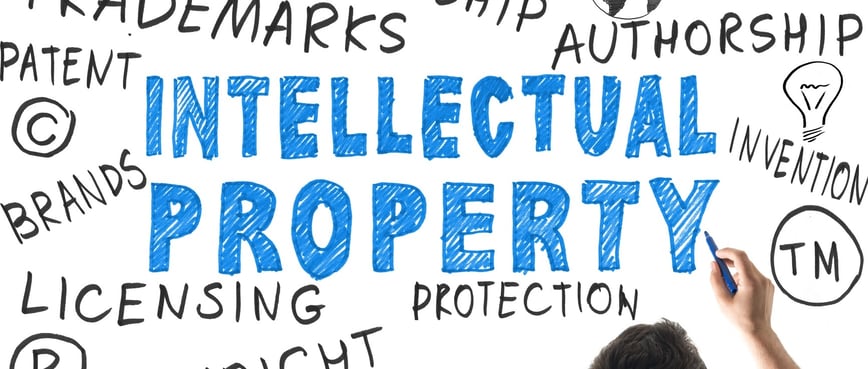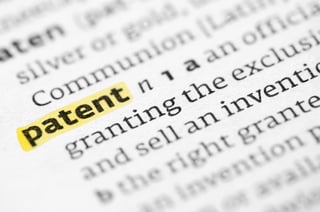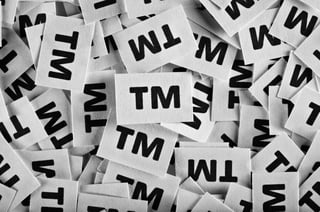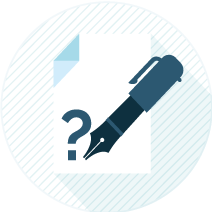
Intellectual property protection isn’t as simple as declaring ownership of a particular product or asset. In most countries, there are four primary types of intellectual property (IP) that can be legally protected: patents, trademarks, copyrights, and trade secrets. Each has their own attributes, requirements and costs.
Before narrowing your focus on which form of protection to use, know that these forms of protection are not mutually exclusive. Depending on what you’re doing, you might be able to use a “belt & suspenders” approach and apply multiple forms of protection, or one approach might be the most sensible. Read the descriptions below to get some of the basics.
Patent
Used to protect inventive ideas or processes – things that are new, useful and nonobvious - patents are what most often come to mind when thinking of IP protection. Patents are also used to protect newly engineered plant species or strains, as well.
Procedure
For most companies, patents result from the following stages:
Conceptualization
Typically, innovation teams work to address a common problem facing their organization, industry, or the world at large when developing their idea. When they’ve arrived at a solution or concept, they’ll draw up plans and gather the resources necessary to make it a reality. Prototypes or drawings can be created to provide a more accurate description of the end product or process.
Invention Disclosure
An internal review process often occurs with every invention. The innovation team consists of internal counsel and an invention review panel of varying disciplines. The reviewers assess, rate, rank, score, and highlight potential flaws in the supporting documents and descriptions for the invention, which are then addressed by the inventor. These reviews can and often do take place multiple times for a single invention.
Related Post: Leveraging IP Management Software at 4 Invention Disclosure Stages
Patent Application
If the invention is deemed meritorious enough for the pursuit of patent protection, some organizations prepare their own provisional or nonprovisional patent applications. Others will farm this stage out. There may be more tweaks as an application is prepared, and then submission to the appropriate patent office and the prosecution stage begins (the back & forth with the government patent office). Typically it is outside counsel that manages this process and related docketing activities.
Docketing is the overarching name for activities that include management of paperwork and meeting filing deadlines specified by the government patent office. Because the application process is often very complicated, patent offices highly recommend working with experienced patent attorneys to handle this process.
Maintenance
Once a patent is approved, it has a finite lifetime. Patent holders are responsible for maintaining and tracking the usage of their patents and paying the appropriate periodic government renewal fees. If a given technology or other patented asset is collecting dust, you might not want to renew it. Instead, you can try and sell, license or donate it. Conversely, if a patented asset is performing well through product sales or licensing activities and its life is getting shorter, you might think about innovating ahead and maintaining competitive momentum.
Costs
Costs will vary depending on the country or countries where you file an application, and can run into tens of thousands of dollars depending on the invention’s complexity, plus attorney fees. Maintenance fees over the lifetime of the patent can run into thousands more per patent, per country where patent rights have been granted. You have to keep your eyes on these costs.
Related Post: Managing Patent Application Costs Can Influence Your Margins
Trademark

A trademark is unlike a patent in that it protects words, phrases, symbols, sounds, smells and color schemes. Trademarks are often considered assets that describe or otherwise identify the source of underlying products or services that a company provides, such as the MGM lion roar, the Home Depot orange color scheme, the Intel Inside logo, and so on.
Procedure
Trademarks do not necessarily require government approval to be in effect; they can apply through abundant use in interstate commerce. Still, registration of a trademark affords far superior protection and is gained by filing an application with the proper government office.
A trademark application requires the company or user to provide a clear description and representation of the mark and its uses in conjunction with associated products or services. As with patents, it’s a good idea to partner with outside counsel that specializes in trademark applications and/or search services so they can help ensure there is a clear path for your desired mark.
Costs
Trademarks are generally quite less expensive to obtain. According to the US Patent and Trademark Office, trademark registration currently costs between $225 and $325 for each class code you use per mark. Attorney and search fees are extra. There are also periodic (and relatively inexpensive) government maintenance fees for trademarks.
Copyright
Copyrights do not protect ideas, but rather the manner in which ideas are expressed (“original works of authorship”) - written works, art, music, architectural drawings, or even programming code for software (most evident nowadays in video game entertainment). With certain exceptions, copyrights allow the owner of the protected materials to control reproduction, performance, new versioning or adaptations, public performance and distribution of the works.
Procedure
Copyrights in general attach when the original works become fixed in a tangible medium, but should be registered with the government copyright office for optimal protection in the form of damages, injunctions and confiscation. Copyright registration applications are much simpler than patents or trademarks, and typically can be obtained by the author alone. The US Copyright Office encourages use of their online application system, and requires a sample of the work to be protected and some background information about the author.
Costs
Depending on the type of work being protected, currently fees vary between $25-$100 in the US. The most frequent copyright registration sought is for one work by one author, and costs about $35.
Trade Secret

Trade secrets are proprietary procedures, systems, devices, formulas, strategies or other information that is confidential and exclusive to the company using them. They act as competitive advantages for the business.
Procedure
There actually isn’t a federally-regulated registration process for trade secrets. Instead, the onus is on the company in possession of the secret to take necessary precautions to maintain it as such. This is an ongoing, proactive process and can include clearly marking relevant documents as “Confidential,” implementing physical and data security measures, keeping logs of visitors and restricting access. The issuance of nondisclosure agreements or other documented assurances of secrecy can also be employed. One of the first defenses typically put up when you assert that someone misappropriated your trade secret is that you failed to adequately treat it as a trade secret.
Costs
Though there are no official registration costs, there are costs associated with taking appropriate precautions and security measures. You must weigh the competitive significance of your secrets against the cost of protecting them.
How Can You Manage Your Different Assets?
The use of IP management software has become a crucial tool for businesses of all sizes hoping to get a better view of their assets. The impact of tracking intellectual property’s creation, usage and cost structure is hugely evident in different companies’ abilities to both quickly launch products, and preserve revenue for existing assets. See how two well-known products, the Koosh ball and Pfizer’s Viagra tablets, leveraged IP management techniques to achieve success. Click here to read the story in a free downloadable eBook.




